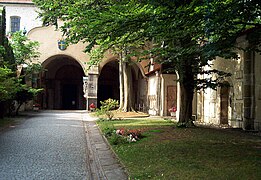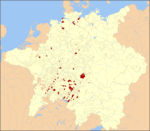Regensburg
This article needs additional citations for verification. (February 2024) |
Regensburg | |
|---|---|
Urban district | |
| Subdivisions | 18 districts |
| Government | |
| • Lord mayor (2020–26) | Gertrud Maltz-Schwarzfischer[1] (SPD) |
| Area | |
| • Total | 80.76 km2 (31.18 sq mi) |
| Population (2022-12-31)[2] | |
| • Total | 157,443 |
| • Density | 1,900/km2 (5,000/sq mi) |
| Time zone | UTC+01:00 (CET) |
| • Summer (DST) | UTC+02:00 (CEST) |
| Postal codes | 93001–93059 |
| Dialling codes | 0941 |
| Vehicle registration | R |
| Website | www.regensburg.de |
| Official name | Old town of Regensburg with Stadtamhof |
| Criteria | Cultural: ii, iii, iv |
| Reference | 1155 |
| Inscription | 2006 (30th Session) |
| Area | 182.8 ha |
| Buffer zone | 775.6 ha |
Regensburg
The medieval centre of the city was made a
History
Early history

The first settlements in the Regensburg area date from the Stone Age. The oldest Celtic name given to a settlement near Regensburg was Radasbona, a site where a Roman fort was built around AD 90. In 179, a major new Roman fort, called Castra Regina ("fortress by the river Regen"), was built for Legio III Italica during the reign of Emperor Marcus Aurelius.[7] It was an important camp at the most northerly point of the Danube; it corresponds to what is today the core of Regensburg's Old City or Altstadt east of the Obere and Untere Bachgasse and west of the Schwanenplatz. It is believed that as early as the late Roman period the city was the seat of a bishop.
From the early 6th century, Regensburg was the seat of a ruling family known as the
By the
Late Middle Ages and early modern period

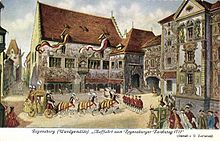

In 1245 Regensburg became a
From 1663 to 1806, the city was the permanent seat of the Imperial Diet of the Holy Roman Empire, which became known as the Perpetual Diet of Regensburg. Thus, Regensburg was one of the central towns of the Empire, attracting visitors in large numbers.
A minority of the population remained
Late modern period
In 1803 the city lost its status as an imperial city following its incorporation into the
Between April 19 and April 23, 1809, Regensburg was the scene of the Battle of Ratisbon between forces commanded by Henri Gatien Bertrand and Napoleon himself and the retreating Austrian forces. The city was eventually overrun, after supplies and ammunition ran out. The city suffered severe damage during the fight, with about 150 houses being burnt and others being looted. Robert Browning's poem Incident at the French Camp describes the battle from the French perspective, but is filled with historical errors.
Nazism and World War II

The Jewish community was persecuted after the
Regensburg was home to both a
History after 1945
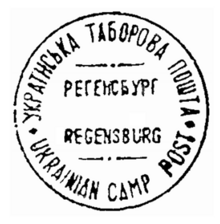
Between 1945 and 1949, Regensburg was the site of the largest
At the beginning of the 1960s, Regensburg invested heavily in technical and social
In 1997, Regensburg was awarded the
The
Geography

Topography
Regensburg is situated on the northernmost part of the Danube river at the geological crossroads of four distinct landscapes:
- to the north and northeast lies the Bavarian Forest with granite and gneiss mountains, wide forests and its national park
- to the east and south-east is the fertile Danube plain (Gäuboden) which are highly cultivated loess plains
- the south is dominated by the Tertiary Hill Country, a continuation of Alpine Foreland
- to the West is Franconian Jura
Climate
Regensburg straddles the humid continental (Dfb) and oceanic (Cfb) climate zones under the Köppen climate classification. While the average temperature of 8.5 °C (47.3 °F) in the period from 1971 to 2000 is slightly above the German average (7.8 °C or 46.0 °F), still only 5 of the 80 cities in Germany above 100,000 inhabitants are colder. The average precipitation of 636 millimetres (25.0 inches) per year ranges slightly below the German average (approximately 700 millimetres or 28 inches). For the newer period from 1981 to 2010 the average temperature and precipitation rose up to 8.9 °C (48.0 °F) respectively 658 millimetres (25.9 inches). As this increase in the average temperature can also be seen in the other cities, Regensburg still ranks fifth place (shared with Ingolstadt and Kiel) in the above-mentioned ranking.[17] With a total of 1670 sunshine hours per year, Regensburg is roughly 120 hours above German average.[18]
The warmest month of the year, on average, is July. The coolest month of the year, on average, is January.
| Climate data for Regensburg (1991–2020 normals) | |||||||||||||
|---|---|---|---|---|---|---|---|---|---|---|---|---|---|
| Month | Jan | Feb | Mar | Apr | May | Jun | Jul | Aug | Sep | Oct | Nov | Dec | Year |
| Mean daily maximum °C (°F) | 2.3 (36.1) |
4.7 (40.5) |
10.3 (50.5) |
16.5 (61.7) |
20.7 (69.3) |
24.2 (75.6) |
26.1 (79.0) |
25.8 (78.4) |
20.3 (68.5) |
13.9 (57.0) |
6.9 (44.4) |
2.9 (37.2) |
14.6 (58.3) |
| Daily mean °C (°F) | −0.4 (31.3) |
0.7 (33.3) |
4.9 (40.8) |
9.7 (49.5) |
14.2 (57.6) |
17.6 (63.7) |
19.3 (66.7) |
18.9 (66.0) |
14.1 (57.4) |
9.0 (48.2) |
4.0 (39.2) |
0.6 (33.1) |
9.4 (48.9) |
| Mean daily minimum °C (°F) | −2.9 (26.8) |
−2.5 (27.5) |
0.5 (32.9) |
3.8 (38.8) |
8.1 (46.6) |
11.7 (53.1) |
13.4 (56.1) |
13.2 (55.8) |
9.2 (48.6) |
5.3 (41.5) |
1.5 (34.7) |
−1.6 (29.1) |
5.0 (41.0) |
| Average precipitation mm (inches) | 48.3 (1.90) |
37.1 (1.46) |
43.6 (1.72) |
35.9 (1.41) |
60.2 (2.37) |
80.0 (3.15) |
76.9 (3.03) |
73.3 (2.89) |
49.9 (1.96) |
49.0 (1.93) |
48.1 (1.89) |
54.3 (2.14) |
660.1 (25.99) |
| Average precipitation days (≥ 1.0 mm) | 16.6 | 14.4 | 14.5 | 11.6 | 14.4 | 14.5 | 15.3 | 13.4 | 12.8 | 14.4 | 14.7 | 17.7 | 174.8 |
| Average snowy days | 14.8 | 13.2 | 3.8 | 0.1 | 0 | 0 | 0 | 0 | 0 | 0 | 2.2 | 8.8 | 42.9 |
| Average relative humidity (%)
|
87.3 | 82.8 | 75.9 | 68.8 | 70.3 | 70.7 | 70.5 | 72.3 | 79.4 | 85.9 | 89.8 | 90.1 | 78.6 |
| Mean monthly sunshine hours | 47.6 | 80.1 | 131.2 | 186.5 | 215.7 | 225.6 | 234.4 | 221.2 | 158.6 | 97.5 | 45.0 | 37.8 | 1,681.2 |
| Source: World Meteorological Organization[19] | |||||||||||||
Main sights
City


Regensburg includes the largest medieval old town north of the Alps with nearly 1,500
- The Dom (Cathedral) is an example of pure German Gothic and is regarded as the main work of Gothic architecture in Bavaria. It was founded in 1275 and completed in 1634, with the exception of the towers, which were finished in 1869. The interior contains numerous interesting monuments, including one of Peter Vischer's masterpieces. Adjoining the cloisters are two chapels which predate the cathedral. One of these, known as the old cathedral, goes back perhaps to the 8th century.[20] The official choir for the liturgical music at St Peter's Cathedral is the famous Regensburger Domspatzen ("cathedral sparrows").
- The .
- The Regensburg Sausage Kitchen is a major tourist destination, but locals eat there as well. It was originally built as the construction headquarters of the stone bridge and now lies adjacent to it.
- Remains of the Roman fortress' walls including the Porta Praetoria.
- The It stands next to the Jakobstor, a medieval city gate named after it.
- The old parish church of St. Ulrich is a good example of the Transition style of the 13th century, and contains a valuable antiquarian collection.[20] It houses the diocesan museum of religious art.
- Examples of the Romanesque basilica style are the church of St. Emmeram, built in the 13th century, remarkable as one of the few German churches with a detached bell tower. The cloisters of the ancient abbey, one of the oldest in Germany, are still in a fair state of preservation. In 1809 the conventual buildings were converted into a palace for the prince of Thurn and Taxis, hereditary postmaster-general of the Holy Roman Empire.[20]
- The Adler-Apotheke, located nearby the Regensburg Cathedral, was founded in 1610 and is one of the oldest pharmacies in Regensburg. The ancient interior and historical vessels can be viewed.
- Wealthy patrician families competed against each other to see who could build the highest tower of the city. In 1260, the Goldener Turm (golden tower) was built on Wahlenstraße.
- The Old Town Hall, dating in part from the 14th century, contains the rooms occupied by the Imperial Diet from 1663 to 1806.[20]
- The Gasthof zum Goldenen Kreuz (Golden Cross Inn) is also of historical interest: it is where Don John of Austria.[20]
- The statue of John of Austria, born 1547 in Regensburg, was erected 1978 on the fourth centenary of his death and is a copy of a monument in Messina, Italy.
- Perhaps the most pleasant modern building in the city is the Gothic villa of the king of Bavaria on the bank of the Danube.[20] The grounds are now opened to public and known as VillaPark.
- Among the public institutions of the city are the public library, picture gallery, botanical garden, and the institute for the making of stained glass. The city's colleges (apart from the University of Regensburg) include an episcopal clerical seminary, and a school of church music.[20]
- St. Emmeram's Abbey, now known as Schloss Thurn und Taxis, is a huge castle owned by the powerful Thurn and Taxis family.
- Schloss Höfling, a castle owned by the Thurn und Taxis family
- The City Park, the oldest and largest park in Regensburg with a lot of artwork.
- The Botanischer Garten der Universität Regensburg is a modern botanical garden located on the University of Regensburg campus.
- Herzogspark also contains several small botanical gardens.

Surroundings

Near Regensburg there are two very imposing classical buildings erected by Ludwig I of Bavaria as national monuments dedicated to German patriotism and greatness:[20]
- The more imposing of the two is the Walhalla, a costly reproduction of the Parthenon, erected as a Teutonic temple of fame on a hill rising from the Danube at Donaustauf, 10 kilometres (6.2 miles) to the east. The interior, which is richly decorated with coloured marble, gilding and sculptures, contains the busts of more than one hundred notable Germans.[20]
- The second of King Ludwig's buildings is the Befreiungshalle at Kelheim, 25 kilometres (16 miles) higher up the Danube. It is a large circular monument built for the glorification of the heroes of the 1813 War of Liberation.[20]
Weltenburg Abbey (Kloster Weltenburg), a Benedictine monastery, is located in Weltenburg near the town of Kelheim. The abbey is situated on a peninsula of the Danube, by what are known as the "Weltenburg Narrows" or "Danube Gorge". The monastery, founded by Irish or Scottish monks in about 620, is said to be the oldest monastery in Bavaria.
To the east of Regensburg lies the Bavarian Forest and its National Park, one of the most visited protected areas in Germany.
Regensburg is on the designated heritage route, the Route of Emperors and Kings.[21]
Culture
Museums and exhibitions
There are 20 museums in Regensburg. The
In addition, there are the Diocese Museums (Bistumsmuseen) of Regensburg and a branch of the Bavarian National Museum located in St. Emmeram's Abbey, which contains the Princely Treasure Chamber of the Thurn und Taxis family. The Domschatzmuseum where church treasures, monstrances and tapestries are displayed is in St. Peter's Cathedral. Other museums include the Kunstforum Ostdeutsche Galerie, the Naturkundemuseum Ostbayern, the Reptile Zoo, the Regensburg Museum of Danube Shipping (Donau-Schiffahrts-Museum), the Public Observatory Regensburg as well as the Watch Museum (Uhrenmuseum), the Golf Museum, the Post Museum and the Dinoraeum. To celebrate its centenary in 2018, the State of Bavaria opened the Museum of Bavarian History in Regensburg.[22] In 2023 a Dackelmuseum (Dachshund museum) opened. There are also guided tours of most of the historical monuments in Regensburg, as well as organized tours of the city available in several languages.
Theaters

The Theater Regensburg on the Bismarckplatz was established in 1804 and is the city's most important theater. Operas, operettas, musicals and ballets are performed there. In the summer open-air performances also take place. While the theater on the Bismarckplatz is the city's oldest and largest, the Theater Regensburg also has four other stages with programmes that complement each other. In the Neuhaussaal of the theater on the Bismarckplatz, concerts by the Philharmonic Orchestra Regensburg take place. The Velodrom Theater presents musicals and plays. In the Haidplatz Theater it is mainly literary and modern plays that are performed, whereas the Turmtheater at the Goliathplatz puts on cabarets, musicals and plays for children as well as modern plays.[23]
Music
Regensburg is home to the famous
, are presented every summer during the Bavarian Jazz weekend during which over a hundred bands, combos, and soloists perform in the Old Town. In 2015, the House of Music was opened, giving a home to skilled musicians and their education.Film and cinema
The international
Dialect
Although the
The first dictionary of a German dialect was Johann Ludwig Prasch's Glossarium Bavaricum.[27] Published in Regensburg in 1689, it contains 500 words from the Bavarian variation spoken in Regensburg.[28][29] Regensburg's Bauerntheater, a type of farmers' or folk theater, has staged plays delivered in Bavarian for over 90 years.[30] Moreover, premiering in 2011, Joseph Berlinger's play "Mei Fähr Lady," a story about three "students" taking a crash course in Bavarian dialect, has been performed at Regensburg's Turmtheater over 300 times.[31] In fact, the role of the dialect professor is played by Ludwig Zehetner, professor emeritus in Bavarian dialectology at University of Regensburg. Manfred Rohm, whose pen name Sepp Grantelhauer takes on the Bavarian verb granteln for "to complain," writes a weekly satirical column solely in Bavarian for the Regensburger Rundschau.[32]
Buildings
The Old Town of Regensburg with nearly 1,500
Recreation
The Old Town of Regensburg is surrounded completely by a green belt. Numerous inner-city parks like the City Park (Stadtpark), the Herzogspark, the Dörnbergpark, the Villapark or the university's botanical garden are a source for recreation and leisure.
Memorial sites
The city of Regensburg has erected several memorials to combat
- Memorial for victims of the Holocaust
- Memorial for victims of forced "euthanasia"
- Memorial for concentration camp inmates and prisoners of war
- Memorial for violence against women
Particular to Regensburg are the so-called Stolpersteine (stumbling stones) in honor of Jews deported during Nazism.
Events
Twice a year the Regensburg Dult takes place. This is the city's
Nightlife
With over 500 bars, restaurants, clubs, and other venues in the inner city alone, Regensburg provides a rich and diverse nightlife due to its young population.
Demographics
Population
In May 2017, Regensburg had 164,896

International communities
Nearly 12% of the total population are foreign residents. Most of them come from
| Nation | Population (31.12 2019) |
|---|---|
| 2,660 | |
| 1,970 | |
| 1,605 | |
| 1,535 | |
| 1,480 | |
| Total: | 30,535 |
Religion
A relative majority of Regensburg's population is
Politics
The city of Regensburg falls within the Regensburg electoral district, a constituency of the German federal parliament in Berlin (the Bundestag).
Government
The mayor and the
The
| Party | votes | change | seats | change | cooperation |
|---|---|---|---|---|---|
| Social Democratic Party | 12.2% | -21.5 | 7 | ||
| Christian Social Union | 32.8% | -7.1 | 13 | ||
The Greens |
21.7% | +11.2 | 11 | ||
| Free Voters | 5.9% | -1.0 | 3 | ||
| Ecological Democratic Party | 7.2% | +0.8 | 3 | - | |
| BRÜCKE | 12.4% | +12.4 | 6 | ||
| Others | 15.0% | 8 | |||
Boroughs
Regensburg is subdivided into 18 boroughs (Stadtbezirke): Innenstadt, Stadtamhof, Steinweg-Pfaffenstein, Sallern-Gallingkofen, Konradsiedlung-Wutzlhofen, Brandlberg-Keilberg, Reinhausen, Weichs, Schwabelweis, Ostenviertel, Kasernenviertel, Galgenberg, Kumpfmühl-Ziegetsdorf-Neuprüll, Großprüfening-Dechbetten-Königswiesen, Westenviertel, Ober- und Niederwinzer-Kager, Oberisling-Graß, Burgweinting-Harting. Each borough contains a number of localities (Ortsteile), which can have historic roots in older municipalities that became urbanized and incorporated into the city.
Twin towns – sister cities
Regensburg is twinned with:[36]
 Aberdeen, United Kingdom (1955)
Aberdeen, United Kingdom (1955) Brixen, Italy (1969)
Brixen, Italy (1969) Clermont-Ferrand, France (1969)
Clermont-Ferrand, France (1969) Tempe, United States (1976)
Tempe, United States (1976) Plzeň, Czech Republic (1993)
Plzeň, Czech Republic (1993) Odesa, Ukraine (1980)
Odesa, Ukraine (1980) Budavár (Budapest), Hungary (2005)
Budavár (Budapest), Hungary (2005) Qingdao, China (2009)
Qingdao, China (2009)
Economy
Regensburg's economy counts among the most dynamic and fastest growing in Germany.
Companies
There are several
Aside from the industrial sector,
OTTI, the Eastern Bavaria Technology Transfer-Institut e.V., is headquartered in Regensburg.[38]
Tourism
The city recorded 912,238 overnight hotel stays and 531,943 hotel guests in 2012.[39] Tourism figures have nearly doubled within the last 15 years and Regensburg has become one of the most-visited German cities from 100,000 to 500,000 residents. In 2014, Regensburg was ranked as a Top-30 travel attraction in Germany by international tourists.[6]
Infrastructure
Transport

The local transport is provided by a bus network run by the RVV (Regensburger Verkehrsverbund).[40]
Energy
Regensburg's energy is mainly supplied by the German company
Health
Regensburg has one of the most modern
The city's BioPark, home to Bavaria's second largest
Education


Universities and academia
Regensburg is known for its higher education institutions, the largest being the University of Regensburg. Founded in 1962, it is one of Germany's newest universities and ranked among the Top 400 universities worldwide. Among the prominent intellectuals associated with the university are Pope Benedict XVI, Udo Steiner and Wolfgang Wiegard. The campus is situated in a single location together with the Regensburg University of Applied Sciences.
Since 1874 there has been a College of Catholic Music in the city, the Hochschule für Katholische Kirchenmusik und Musikpädagogik Regensburg.
Research
In addition to the research centres and institutes of the universities, there are several
Schools
There are eighteen
The SIS Swiss International School provides international educational.[44] Founded in 2002, the Sportinternat Regensburg was Europe's first baseball boarding school.[45]
Sports
Football
SSV Jahn Regensburg is the local football club and attracts a fairly large local following. The team was part of a larger sports club founded in 1889 as Turnerbund Jahn Regensburg which took its name from Friedrich Ludwig Jahn, whose ideas of gymnastics greatly influenced German sport in the 19th century. The football department was created in 1907. The footballers and swimmers left their parent club in 1924 to form Sportbund Jahn Regensburg.
Ice hockey
EV Regensburg is the local ice hockey club, currently playing in the DEL2, Germany's second highest professional league.
Baseball
Athletics
The local
Notable people
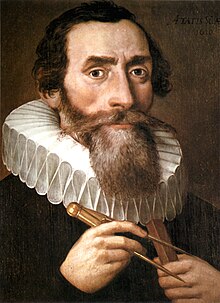

- St. Emmeram's Abbey
- Bishop of Regensburg
- Cluniacreformer of Germany, abbot, founder and saint
- Petachiah of Ratisbon, a 12th–13th century rabbi, best known for his extensive travels throughout Eastern Europe, the Caucasus, and the Middle East
- Chassidei Ashkenaz
- Albertus Magnus (ca.1206–1280), scholastic philosopher and polymath.[46]
- Konrad of Megenberg (1309–1374), scholar and academic[47]
- Albrecht Altdorfer (ca.1480–1538), printmaker, painter of landscapes, historical and Biblical subjects.[48]
- Ulrich Schmidl (1510-1579 in Regensburg), supposed co-founder of Buenos Aires[49]
- John of Austria (1547–1578), the illegitimate son of Charles V, Holy Roman Emperor.[50]
- Johannes Kepler (1571–1630), mathematician and astronomer.[51]
- landowners
- German mystic and religious leader, critic of Lutheranism[52]
- Emanuel Schikaneder (1751–1812), impresario, actor, singer, composer and librettist of The Magic Flute
- explorer.[53]
- Elise Barensfeld (1796–after 1820), soprano
- Joseph Hanisch (1812–1892), musician, composer and organist[54]
- The Rev. Dr. Franz Xaver Haberl (1840-1910), Roman Catholic musician, teacher of Lorenzo Perosi
- Maximilian Oberst (1849–1925), physician and surgeon
- Anton Vilsmeier (1894–1962), German chemist best known for the Vilsmeier-Haack reaction, born in Burgweinting, which is now part of Regensburg, and attended the Altes Gymnasium in Regensburg
- Ludwig Bemelmans (1898–1962), Austro-Hungarian born American writer of children's books and internationally renowned gourmet, spent his early life in Regensburg
- Oskar Schindler (1908–1974), German industrialist, and humanitarian, emigrated to Argentina after WW2
- Anton Hackl (1915–1984), Luftwaffe Flying Ace
- Pope Benedict XVI (1927–2022), professor of theology at the University of Regensburg from 1969 to 1977, who retained the title honorary professor; made an honorary citizen in 2006
- Walter Röhrl (born 1947), racing driver
- Allan Zeman (born 1949), Hong Kong businessman
- Andrea Maria Schenkel (born 1962), best-selling author of Tannöd and other works
- Ulrich Eberl (born 1962), science and technology journalist
- Amazon.com's presence in Germany; grew up in Regensburg, lives in Miami
- Hisham Zreiq (born 1968), award-winning Palestinian Christian Independent filmmaker, poet and visual artist
- Willie Duncanguitarist in Spider Murphy Gang (formed 1977)
- Elisabeth Elli Erl (born 1979), winner of German Pop Idol 2004 – singer and teacher
- Benjamin Appl (born 1982), German-British lyric baritone
- Simone Laudehr (born 1986), German national team footballer, women's world cup champion 2007
Gallery
-
The Interior of Regensburg Cathedral
-
The Stone Bridge and Regensburg Cathedral by night
-
New Parish Church (Neupfarrkirche)
-
The romanic chapel St. George and Afra
-
The Danube seen from the Stone Bridge
-
The bay window of the Old Town Hall
-
Monument of DonJuan de Austria
-
St. Emmeram's Abbey
-
Dampfnudel bakery in the Baumburger Turm
-
The Stone Bridge
-
Little Boy (Bruckmandl) on the Stone Bridge
-
Old city gate
See also
- History of the Jews in Regensburg
- List of mayors of Regensburg
- List of the prince-bishops and bishops of Regensburg
- List of cities and town on the Danube river
- Regensburg (district)
Notes
- ^
- German: [ˈʁeːɡn̩sbʊʁk] ⓘ
- Bavarian: Rengschburg or Rengschburch
- Czech: Řezno
- ^ /ˈrætɪsbɒn/ RAT-is-bon[3]
Regensburg has been known in English as Ratisbon, which is still used in traditional and historical contexts. The name is still known in the Romance languages – including French Ratisbonne and Italian, Spanish, and Portuguese Ratisbona – as a cognate of its Latin name of Ratisbona, which is in turn derived from Gaulish Radasbona.
References
- ^ Liste der Oberbürgermeister in den kreisfreien Städten, accessed 19 July 2021.
- ^ Genesis Online-Datenbank des Bayerischen Landesamtes für Statistik Tabelle 12411-003r Fortschreibung des Bevölkerungsstandes: Gemeinden, Stichtag (Einwohnerzahlen auf Grundlage des Zensus 2011) (Hilfe dazu).
- ^ Noah Webster (1884) A Practical Dictionary of the English Language
- ^ Hintermeier, Hannes. "Regensburg bewirbt sich als Kulturhauptstadt 2010". Faz.net.
- ^ "Old town of Regensburg with Stadtamhof". UNESCO World Heritage Centre. United Nations Educational, Scientific, and Cultural Organization. Retrieved 3 September 2022.
- ^ a b Deutsche Zentrale für Tourismus e.V. (14 August 2015). "The TOP 100 sights and attractions in Germany | Tourism in Germany – travel, breaks, holidays". germany.travel. Retrieved 16 August 2015.
- ^ "Iron Age Braumeisters of the Teutonic Forests". BeerAdvocate. Archived from the original on 13 June 2006. Retrieved 2 June 2006.
- ^ The Biographical Dictionary of the Society for the Diffusion of Useful Knowledge, Vol. III, Part II (page 623), printed by William Clowes and Sons, Stamford Street, London, 1844
- ISBN 9782760522091. Retrieved 10 October 2014.
- ^ Herald of Destiny by Berel Wein. New York: Shaar Press, 1993, page 144.
- ^ Konstantin Moritz Langmaier: Eine Stadt organisiert eine Reichsversammlung. Die Vorbereitungen auf den großen Christentag in Regensburg und die Einzüge von Kardinallegat und Kaiser in die Reichsstadt (1471). Ein Beitrag zur spätmittelalterlichen Kulturgeschichte. In: Verhandlungen des Historischen Vereins für Oberpfalz und Regensburg. Band 161, 2021, 33–80.
- ^ a b "Regensburg During the Holocaust. The Community of Regensburg in the Early Years of the Nazi Regime". Yad Vashem. Retrieved 15 August 2020.
- ^ "Regensburg During the Holocaust. The Regensburg Community During World War II". Yad Vashem. Retrieved 15 August 2020.
- ^ "Regensburg Subcamp". KZ-Gedenkstätte Flossenbürg. Retrieved 15 August 2020.
- ^ Karen Lemiski, Focus on Philately: The stamps of Regensburg, Camp Ganghofersiedlung Archived 2016-03-04 at the Wayback Machine in The Ukrainian Weekly, February 4, 2001, No. 5, Vol. LXIX
- ^ "Europeprize". europeprize.net. Archived from the original on 1 August 2015. Retrieved 16 August 2015.
- ^ "DWD". Retrieved 18 August 2018.
- ^ Ursula Hagner (26 November 2009). "Europäische Wetterlagen" (PDF). Archived from the original (PDF) on 24 September 2015. Retrieved 16 August 2015.
- ^ "World Meteorological Organization Climate Normals for 1991–2020". World Meteorological Organization Climatological Standard Normals (1991–2020). National Oceanic and Atmospheric Administration. Archived from the original on 12 October 2023. Retrieved 12 October 2023.
- ^ a b c d e f g h i j k l One or more of the preceding sentences incorporates text from a publication now in the public domain: Chisholm, Hugh, ed. (1911). "Regensburg". Encyclopædia Britannica. Vol. 23 (11th ed.). Cambridge University Press. p. 37.
- ^ "Discover the Danube – Route of Emperors and Kings". Straße der Kaiser und Könige.
- ^ "Museum". Haus der Bayerischen Geschichte (in German). Retrieved 16 February 2021.
- ^ "Regensburg Theaters". Regensburg Travel. Archived from the original on 4 July 2015. Retrieved 12 February 2021.
- ^ "Oberösterreich im bairischen Sprachraum". StifterHaus. Adalbert-Stifter-Institut des Landes Oberösterreich. Retrieved 23 June 2020.
- ^ "Z' Rengschbuag redt ma anderscht". Mittelbayerische. Mittelbayerischer Verlag KG. 26 July 2012. Retrieved 23 June 2020.
- ^ Holtmeyer, Annette (23 July 2019). "Bairisch – Vom Aussterben bedrohter Dialekt?". planet wissen. Westdeutscher Rundfunk Köln. Retrieved 23 June 2020.
- ^ "Johann Andreas Schmellers "Bayerisches Wörterbuch" (Bavarian Dictionary)". schmeller.badw.de. Bayerische Akademie der Wissenschaften. Retrieved 29 August 2022.
- ISBN 3406305628. Archived(PDF) from the original on 9 November 2017. Retrieved 23 June 2020.
- ^ Prasch, Johann Ludwig. "Glossarium Bavaricum". Bayerische StaatsBibliothek digital. Münchener DigitalisierungsZentrum Digitale Bibliothek. Retrieved 23 June 2020.
- ^ "Das Regenburger Bauerntheater - Hubertushöhe". Urlaubserlebnis. regensburg-bayern.de. Retrieved 23 June 2020.
- ^ "Mei Fähr Lady". Turmtheater Regensburg. Kulturturm Regensburg e.V. 9 July 2015. Retrieved 23 June 2020.
- ^ "Regensburger Rundschau". Rundschau ePaper. Mittelbayerischer Verlag KG. Retrieved 23 June 2020.
- ^ "Informationen, Zahlen und Publikationen der Abteilung Statistik". Stadt Regensburg.
- ^ "Statistisches Jahrbuch der Stadt Regensburg" (PDF). Stadt Regensburg – Amt für Stadtentwicklung. Archived (PDF) from the original on 18 September 2016. Retrieved 30 May 2016.
- ^ "Bevölkerung" (PDF). www.statistik.regensburg.de (in German). 2021. p. 10. Archived (PDF) from the original on 21 June 2023. Retrieved 21 August 2023.
- ^ "Partnerstädte". regensburg.de (in German). Regensburg. Retrieved 15 March 2021.
- ^ "Prognos Zukunftsatlas 2013: Ergebnisübersicht Gesamtranking" (PDF). 7 November 2013. Archived (PDF) from the original on 2 April 2015. Retrieved 16 August 2015.
- ^ "OTTI – Ostbayerisches Technologie-Transfer-Institut e.V." otti.de. Archived from the original on 3 May 2012. Retrieved 10 October 2014.
- ^ "Stadt Regensburg – Abteilung Statistik". statistik.regensburg.de. Retrieved 16 August 2015.
- ^ "About Us". Regensburger Verkehrsverbund. Archived from the original on 16 January 2021. Retrieved 10 December 2020.
- ^ "Energienutzungsplan Stadt Regensburg – Teilbericht C – Ist-Zustand Erzeugung" (PDF). 16 April 2014. Archived from the original (PDF) on 24 September 2015. Retrieved 16 August 2015.
- ^ "Statistisches Bundesamt Deutschland – Interaktive Karten – AI014-1". www-genesis.destatis.de. Retrieved 16 August 2015.
- ^ Wirtschaftswoche, Nr. 49, 2014, Städteranking, p. 28
- ^ "SIS Regensburg: A school with an active international community in the heart of Regensburg". swissinternationalschool.de. Retrieved 7 January 2020.
- ^ Böhm, Claudia (19 June 2020). "Baseball-Stadt Regensburg - Softballplatz der Legionäre: Stadt und Freistaat beteiligen sich an Sanierung". Blizz. Blizz Regensburg. Archived from the original on 26 June 2020. Retrieved 24 June 2020.
- ^ . Encyclopædia Britannica. Vol. 1 (11th ed.). 1911. p. 504.
- ^ "Book of Nature". World Digital Library. 1481. Retrieved 27 August 2013.
- ^ . Encyclopædia Britannica. Vol. 1 (11th ed.). 1911. p. 763.
- ^ Stürber, Dorar (13 March 2010). "Ulrich Schmidl, primer cronista del Río de la Plata". Archived from the original on 13 March 2010. Retrieved 6 June 2023.
{{cite web}}: CS1 maint: bot: original URL status unknown (link) - ^ Ward, Adolphus William (1881). . Encyclopædia Britannica. Vol. XIII (9th ed.). p. 730.
- ^ Clerke, Agnes Mary (1911). . Encyclopædia Britannica. Vol. 15 (11th ed.). pp. 749–751.
- ^ Christiaan Sepp (1879), "Gichtel, Johann Georg", Allgemeine Deutsche Biographie (in German), vol. 9, Leipzig: Duncker & Humblot, pp. 147–150
- ^ – via Wikisource.
- ^ "Hanisch, Joseph (Josef)". Bayerisches Musiker-Lexikon Online (BMLO). Retrieved 11 July 2017.
Sources
- David L. Sheffler, Schools and Schooling in Late Medieval Germany: Regensburg, 1250–1500 (Leiden, Brill, 2008) (Education and Society in the Middle Ages and Renaissance, 33).
 This article incorporates text from a publication now in the public domain: Herbermann, Charles, ed. (1913). "Ratisbon". Catholic Encyclopedia. New York: Robert Appleton Company.
This article incorporates text from a publication now in the public domain: Herbermann, Charles, ed. (1913). "Ratisbon". Catholic Encyclopedia. New York: Robert Appleton Company.
External links
- Old town of Regensburg with Stadtamhof UNESCO Official Website
- Explore the Old town of Regensburg with Stadtamhof in the UNESCO collection on Google Arts and Culture
- Official website
 (in German)
(in German) - Stone Bridge of Regensburg Digital Media Archive (creative commons-licensed photos, laser scans, panoramas), mainly covering the medieval Stone Bridge but also including surrounding areas, with data from a Christofori und Partner/CyArk research partnership
- Regensburg – Pictures, Sights and more
- Great privilege for Regensburg by King Philip of Swabia for Regensburg from 1207 taken from the collections of the Marburg University
- "Here Their Stories Will Be Told…" The Valley of the Communities at Yad Vashem, Regensburg, at Yad Vashem website.
- Chiptuning Regensburg



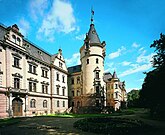






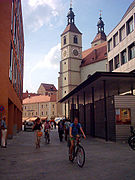
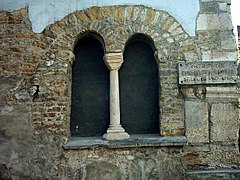
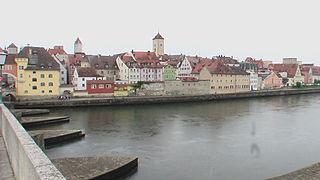

![Goliath House [de]](http://upload.wikimedia.org/wikipedia/commons/thumb/0/09/Regensburg_Goliathhaus_06_2006.JPG/120px-Regensburg_Goliathhaus_06_2006.JPG)

